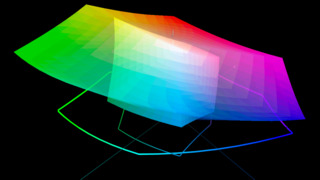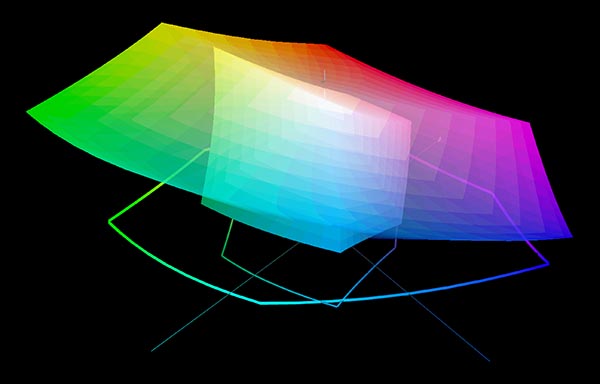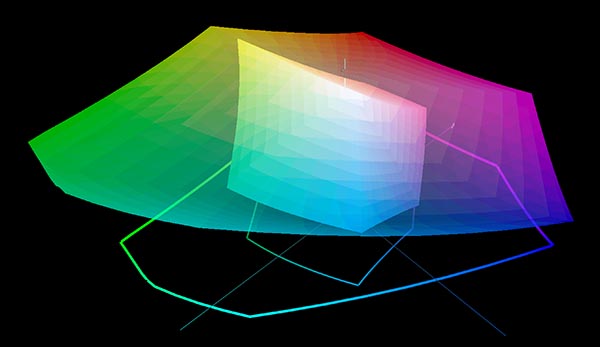What You See Is What You Get. Or Not.
As photography, design, or prepress professionals, we’ve all been told not to rely on the color we see on our monitors because it’s not accurate. Most of the time that’s true, because most people don’t have capable devices or those devices configured...

By Dan Gillespie, Director of Technical Services at Alder Color Solutions
As photography, design, or prepress professionals, we’ve all been told not to rely on the color we see on our monitors because it’s not accurate. Most of the time that’s true, because most people don’t have capable devices or those devices configured properly. Most of what I see is that most people haven’t even tried. I think that’s probably because color management is highly technical and most don’t understand it and therefore use out-of-the-box settings—which will, of course, ensure that the color is not optimal or accurate. However, in many instances, the monitor can be the most accurate color device of all—more accurate than any press or printed proof. It comes down to gamut (among other things).
The definition of “gamut” is “the complete range or scope of something.” In terms of devices (scanners, cameras, monitors, printers), it refers to the complete range of color a device is capable of capturing, displaying, or reproducing (with ink on substrate). Understanding the gamuts of all your particular devices is critical in achieving color accuracy.
So, let’s take a look at some specific examples. In this case we’ll compare a 27-inch Apple Retina (iMac) display gamut to the gamut of the GRACoL® 2013 Coated (CRPC6) profile (the most current/popular printing specification worldwide—intended to represent an offset printing press with four inks (CMYK) on coated paper). You would need gamut viewer software to do these comparisons yourself. You can open any ICC profile and look at the color gamut of the device in 3-D and compare gamuts of the devices in your workflow, in order to determine and understand your capabilities.
In the screenshot below, the smaller (inner) gamut is GRACoL (CMYK device) and the larger (outer) gamut is the monitor (RGB device). You can easily see that there is a chunk (that’s not an official technical term) of the CMYK device gamut sticking out of the monitor RGB gamut. This means that this particular monitor cannot (like ever. at no time. not physicality possible) show you all the colors that this CMYK device can print. You can also see what range of colors are “out of gamut”—which are from green through cyan. If you have CMYK images that have pixels in this out-of-gamut color chunk/range, this monitor is incapable of displaying them and those colors would be forced into the monitor gamut, which isn’t accurate.

So, what’s the conclusion for this case? Answer: The Apple 27-inch Retina display does not have enough gamut to accurately show all the colors in the GRACoL color space.
Let’s look at another case. Here, we’re comparing an EIZO CG277 Professional Graphics monitor to the GRACoL color space. You can clearly see that this monitor color gamut completely covers the printer color gamut (no chunk sticking out). In the 3D grapher software, you can rotate this all around and look at it from any/every angle to confirm this.

So, what’s the conclusion for this case? Answer: The EIZO 27-inch CG277 display has plenty of gamut to accurately show all the colors in the GRACoL color space.
Now, if this EIZO monitor is properly calibrated and profiled, it can/could be the most color accurate device in your entire workflow/company. The notion that you shouldn’t trust what you see on your screen is notunequivocally true. If you have the proper monitor, which covers the gamut of your output device, you can see extremely accurate color. Couple this with the soft proofing functionality in Adobe CC apps, which enables you to choose your printer profiles and convert the preview of the image to the output color space, and it’s nearly exact.
But before we stop there, let’s take a gander at one last scenario. In this case, we’ll compare the EIZO 27-inch CG277 display to a profile of Premium Luster Photo Paper on a new Epson P7570 (this printer has seven primary ink colors: CMYKOGV—aka a huge gamut). You can clearly see a giant chunk of the Epson sticking out of the monitor gamut…

So, what’s the conclusion for this case? Answer: The EIZO 27-inch CG277 display does not have enough gamut to accurately show all the colors in the EPSON P7570 (on Premium Luster Photo Paper) color space. If you have images with pixels in this out-of-gamut chunk, this monitor is incapable of displaying them accurately.
To summarize, you can absolutely rely on seeing accurate color on your monitor—in some cases if you’ve got the proper hardware and it’s set up properly. If you’re printing PANTONE spot colors and/or Extended Gamut Color (ECG=More than CMYK), there may not be a monitor available today that has a color gamut large enough to show you all of these colors accurately (in gamut).
NOTE: There are also methods of determining if any given spot color is in or out of gamut.
Bottom line, monitors can be used as highly accurate color proofing devices. In this day and age, especially because of the pandemic, electronic/digital/soft proofing can and will become mainstream, acceptable and (eventually) preferred.
